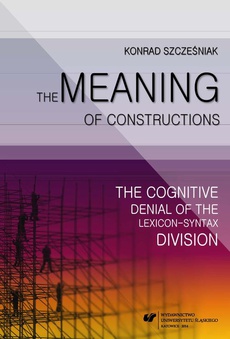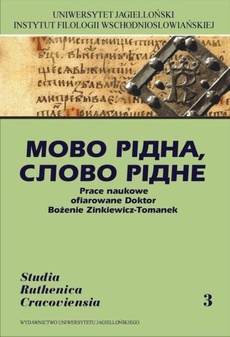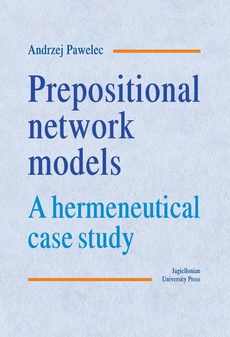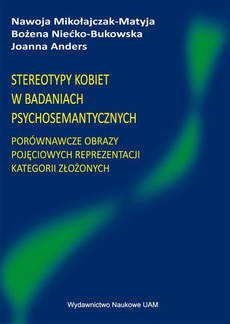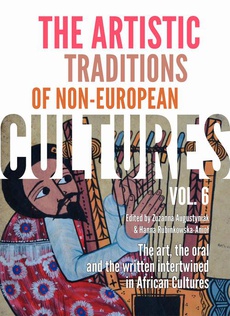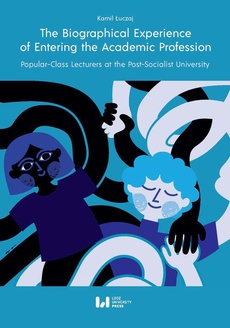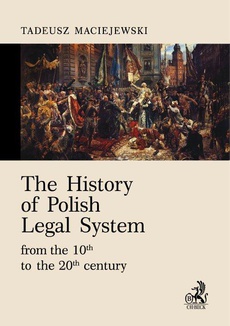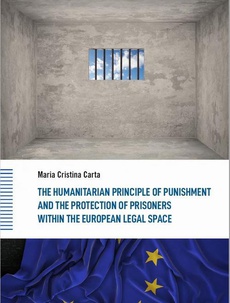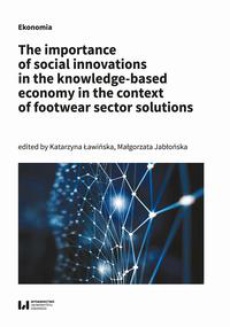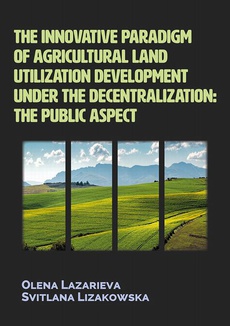POLECAMY
The Meaning of Constructions
The Cognitive Denial of the Lexicon-Syntax Division
Autor:
Wydawca:
Format:
Książka dotyczy tradycyjnego podziału na leksykon i składnię zastąpionego w ostatnich dekadach modelem kontinuum (Lexicon-syntax continuum), w którym nie ma ostrej granicy między komponentami. Opracowanie rewiduje przesłanki (takie jak rozmycie granic między leksykonem i składnią), którymi kierują się obecnie językoznawcy odrzucający podział na leksykon i składnię. Celem opracowania jest wykazanie, że chociaż podział jest nieostry, jest nadal prawdziwy i ma konsekwencje dla elementów języka znajdujących się po obu jego stronach. Jedną z tych konsekwencji jest zróżnicowanie potencjału semantycznego form składniowych w porównaniu do form leksykalnych. Książka adresowana jest do językoznawców pracujących nad konstrukcjami gramatycznymi w ramach językoznawstwa kognitywnego, a w szczególności modelu gramatyki konstrukcji.
| Rok wydania | 2014 |
|---|---|
| Liczba stron | 246 |
| Kategoria | Językoznawstwo |
| Wydawca | Uniwersytet Śląski |
| ISBN-13 | 978-83-8012-272-7 |
| Numer wydania | 1 |
| Język publikacji | angielski |
| Informacja o sprzedawcy | ePWN sp. z o.o. |
Ciekawe propozycje
Spis treści
| Table of Contents | |
| 1. Introduction / | 9 |
| 1.1. Traditional Distinction / | 11 |
| 1.2. Rejection / | 12 |
| 1.3. Meaning / | 15 |
| 1.4. Against Rejecting Too Soon / | 17 |
| 1.5. Construction Grammar / | 19 |
| 1.6. Dimensions of Constructions / | 21 |
| 1.7. Definitions of “Construction” / | 23 |
| 1.8. Terminological Note / | 26 |
| 1.9. Overview / | 30 |
| 2. The Lexicon‑Grammar Distinction / | 31 |
| 2.1. Modularity / | 31 |
| 2.2. Conclusions / | 40 |
| 2.3. Differences Between the Two Classes / | 42 |
| 2.4. A New Model of the Lexicon and Syntax / | 59 |
| 2.5. Pragmatic Strengthening / | 65 |
| 2.6. Persistence / | 67 |
| 2.7. Concluding Remarks / | 68 |
| 3. Oversemanticized Constructions / | 71 |
| 3.1. Implausible Meanings / | 71 |
| 3.2. Spatial Prepositions / | 72 |
| 3.3. Diminutive Morphology / | 74 |
| 3.4. The Into‑Gerund Construction / | 76 |
| 3.5. The Incredulity Response Construction / | 79 |
| 3.6. The Moral Evaluation Construction / | 84 |
| 3.7. Instrumental NP Construction / | 87 |
| 3.8. The Time Away Construction / | 89 |
| 3.9. Past Tense Markers in Slavic Languages / | 91 |
| 3.10. The Give‑Gerund CP Construction / | 99 |
| 3.11. Conclusion / | 101 |
| 4. How Constructions Are Really Constructed: Manner of Obtainment / | 103 |
| 4.1. Rich Meanings in Construction Grammar / | 103 |
| 4.2. The Anatomy of the Construction / | 105 |
| 4.3. Obtainment / | 106 |
| 4.4. Manner / | 107 |
| 4.5. Conflation / | 109 |
| 4.6. Obtainment as Motion /110 | |
| 4.7. History / | 112 |
| 4.8. Possession and Location / | 113 |
| 4.9. Reference Point Relations / | 116 |
| 4.10. Schemas / | 117 |
| 4.11. Combining Schemas / | 123 |
| 4.12. Obtainment and Loss / | 123 |
| 4.13. Conceptual Integration / | 125 |
| 4.14. Blending Spaces in the MOC / | 128 |
| 4.15. The Interaction of the Schemas Within the Construction / | 130 |
| 4.16. Sources of MOC Blending / | 131 |
| 4.17. Online Understanding / | 132 |
| 4.18. Emergence of the Mappings / | 135 |
| 4.19. The “Common Sense” Misconception / | 138 |
| 4.20. Gapping / | 139 |
| 4.21. Obtainment Through Retrieval in English / | 145 |
| 4.22. Event Schemas in the Time Away Construction / | 146 |
| 4.23. Concluding Remarks / | 150 |
| 5. Way Too Much Meaning: The Semantics of the Way Construction / | 151 |
| 5.1. Introduction / | 151 |
| 5.2. Particulars of the X’s Way / | 153 |
| 5.3. The semantics of the X’s Way / | 156 |
| 5.4. Soft Constraints / | 159 |
| 5.5. The Inference of Difficulty / | 162 |
| 5.6. Complementary Distribution of Manner and Result / | 163 |
| 5.7. Blending Disparate Events / | 170 |
| 5.8. Motion Verbs Unattested in the Construction / | 175 |
| 5.9. The Path Phrase / | 178 |
| 5.10. Meanings of the Way Construction / | 183 |
| 5.11. Conclusion / | 184 |
| 6. Too Contentful to Be True / | 187 |
| 6.1. Constructional Frames / | 187 |
| 6.2. Transfers of Meaning / | 197 |
| 6.3. Universal Grinder / | 208 |
| 6.4. Ham Sandwich Coercions / | 209 |
| 6.5. Concluding Remarks / | 216 |
| 7. Final Remarks / | 217 |
| References / | 221 |
| Subject Index / | 235 |
| List of Figures and Tables / | 239 |
| Streszczenie / | 241 |
| Résumé / | 243 |

